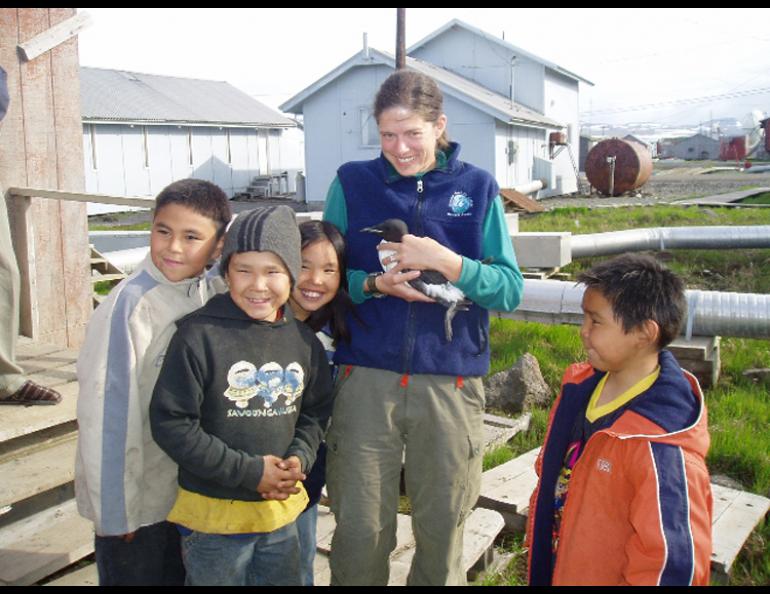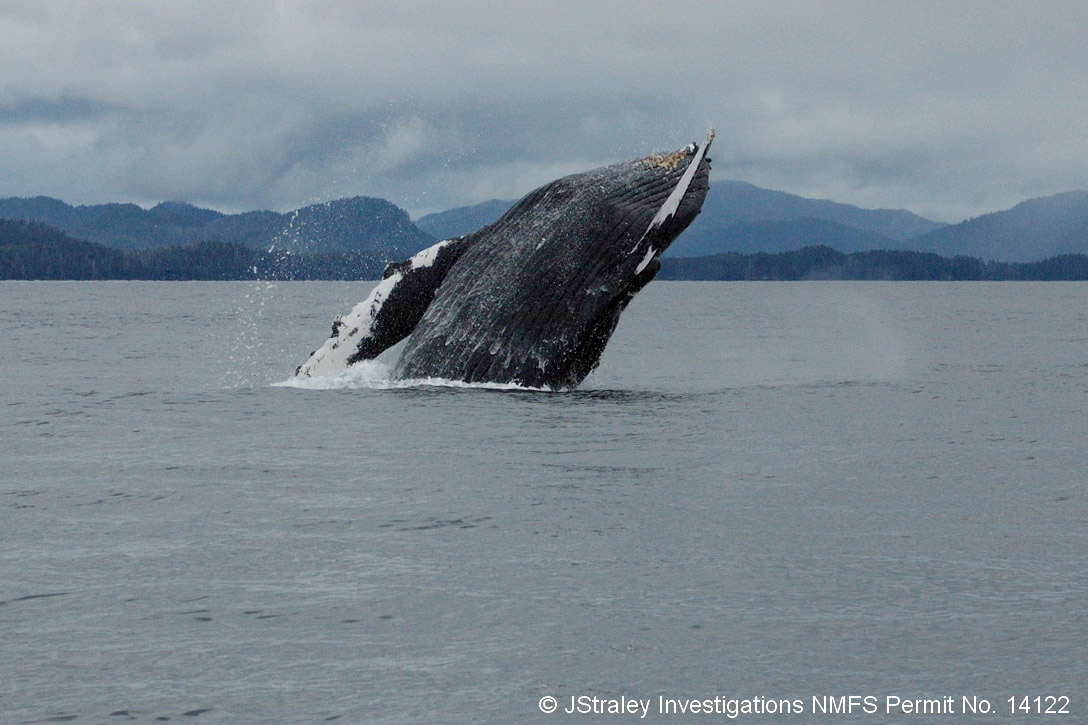

Does a whale's nose know the way to food?
Julie Hagelin remembers the day she hugged a rare New Zealand kakapo parrot to her chest. The soft, green bird emitted the scent of lavender, like dust and honey; it lingered upon Hagelin’s t-shirt for hours. That powerful essence inspired her question to the revered biologist for whom she was working. Was the bird’s pleasant odor attractive to other birds?
“Julie, don’t you know birds can’t smell?”
Hagelin, now a biologist at the University of Alaska Fairbanks and then a volunteer on a once-in-a-lifetime project, nodded politely. But the thought kept bouncing around her inquiring young mind: “How do we know birds can’t smell?”
Thus began a recurring theme in Hagelin’s work that has taken her from St. Lawrence Island, where auklets gathered by the thousands mysteriously emit the scent of tangerines, to Creamer’s Field, where she has applied peppermint oil to the nests of house sparrows to see if they return to a smell they know.
Now, she and other researchers are wondering whether whales use their sense of smell to find food, and whether humans could use it to help attract them away from oil spills or other bad situations.
Hagelin became interested in the smelling ability of whales when she attended a talk in the annual Science for Alaska Lecture Series held in Fairbanks. The speaker, whale researcher Jan Straley of Sitka, ended her talk with an image of a breaching humpback whale and a question to the audience of why whales might do it (researchers don’t know). A bell rang in Hagelin’s head. She approached Straley after the lecture. She asked if the whale might be positioning its blowhole toward the wind in order to get a whiff of what might be out there.
“I hadn’t thought of it before, but it was a good question,” Straley said. “It was a pretty far-out idea, but it’s a great far-out idea to look at.”
Straley, who has studied whales since 1979, partnered with Hagelin on a study in which a student stationed at a lighthouse outside Sitka monitored whales and wind direction to see whether they moved into it. She found that a significant number did, meaning that whales may position themselves to get chemical information from the wind.
At about the same time, longtime Barrow whale biologist Craig George was hosting Hans Thewissen, an expert in whale anatomy. With much effort, they removed brains from harvested bowhead whales, taking care to search for “olfactory bulbs” used for smelling. Using hammers and chisels to get through dense bone, they found the bulbs and removed them. They later did work to see if the whales’ genes related to the sense of smell were turned on. They were.
“(Thewissen) concluded that (bowhead whales) smell about as well as primates,” said George, who recalled conversations with locals who had for years claimed that bowheads could smell.
“Native people are convinced it’s real, and I think for krill feeders there’s an advantage to be able to smell air,” George said.
A humpback or bowhead whale needs to find and eat the equivalent of more than a dozen 50-pound sacks of krill, which look like tiny shrimp but are so small it takes hundreds to fill a cereal bowl. That’s like you eating 7,000 jumbo shrimp in a day.
“When you are searching for a needle-in-a-haystack food source like zooplankton swarms in the seemingly featureless open ocean, you need a reliable signal to find it,” said Hagelin, who pointed out that whales and birds often show up at the same place to feed.
Biologists have shown that “tube-nose” ocean birds zigzag their way toward schools of krill and other tiny zooplankton the way a dog hunts down a tossed biscuit. The birds might be detecting the rotting seaweed odor of dimethyl sulfide, emitted when “phytoplankton spill their guts into the ocean when being chewed upon by zooplankton,” Hagelin said. So, where there’s lots of dimethyl sulfide, there’s usually lots of zooplankton.
If dimethyl sulfide is such a good attractant, maybe researchers could use a manmade version to protect whales, Hagelin said.
“It might be something you could use to predict or manage movements of whales. If there was an oil spill, perhaps you could use the Scooby-snack of scent to get them away.”
This column is provided as a public service by the Geophysical Institute, University of Alaska Fairbanks, in cooperation with the UAF research community. Ned Rozell is a science writer at the institute.






